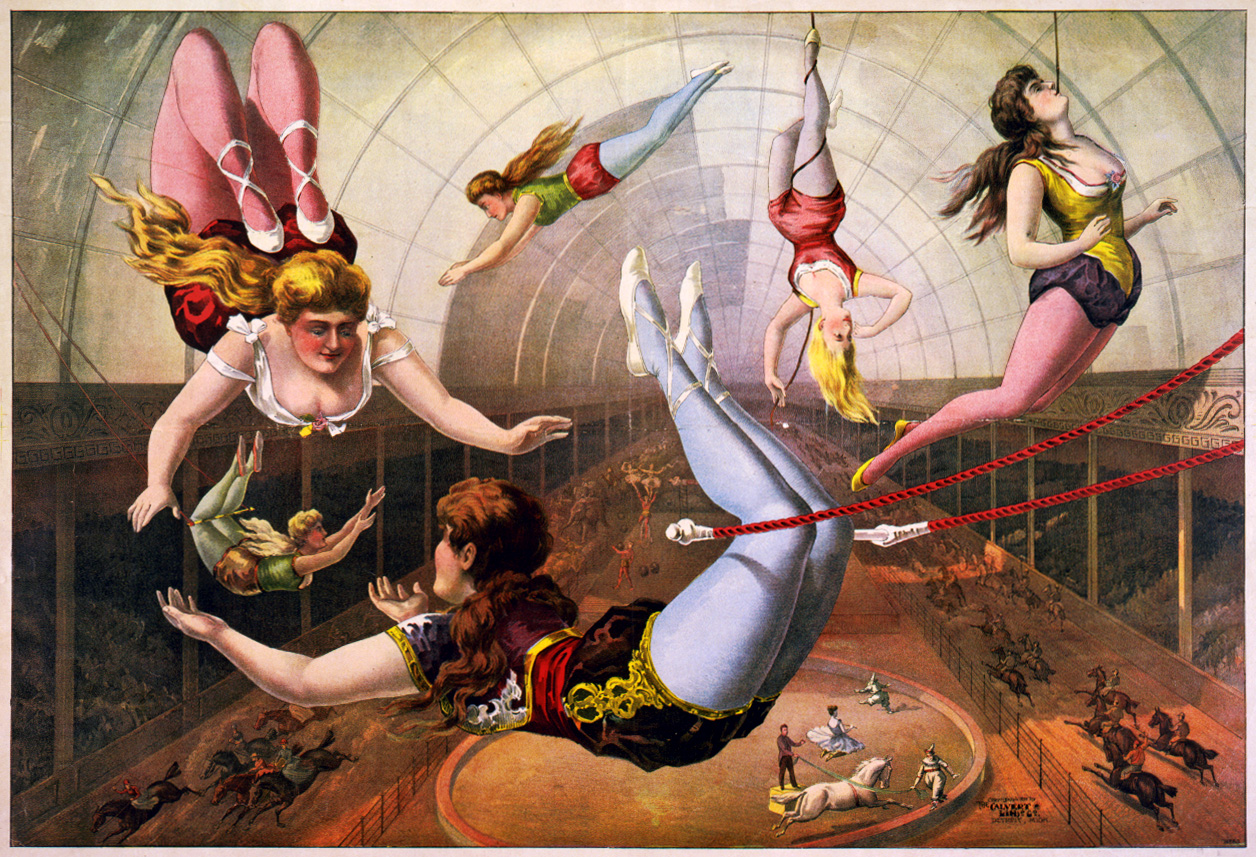Traditional circus such as we understand in Europe exists already more than 200 years. Until the beginning of the contemporary circus in the seventies of 20th century, it has preserved in an almost unaltered form. However, we must not forget about the rope dancers in ancient Rome, acrobatic tradition in ancient China, ancient Egypt juggler performances as well as troubadours and other travelling artists in medieval Europe. In short, the ancestors of circus exist since mankind can remember itself.
The concept of “circus” originated in ancient Rome. Latin word circus indicates an oval-shaped building in which horse and chariot races, gladiator fights, fights with wild beasts were held. There performed equestrians, jugglers, acrobats and animal trainers.
However, Philippe Astly’s show in 1768 ir regarded as the beginning of circus. Astly’s show for the first time differed from what his contemporaries offered. He offered not only the popular tricks with horses but also complemented them with acrobatic tricks, jugglers and exotic animals show. It was he who built the first riding hall (13m diameter) which became a circus canon. It turns out that the size and shape of arena has been primarily designed for convenience of equestrian performances.
Interestingly, the show obtained its name due to Philippe Astly’s competitors – Charles Hugues and Charles Dibdin who established a competing company and named it „The Royal Circus.”1
Circus tradition gradually spread throughout Europe and from Europe it traveled to America. At the beginning of 18th century circus already knew such items as acrobatics, tumbling rides, jugglers, dance, dumb and speaking clowns and trained exotic animals. Thus, as circus spread in America, many innovations occurred, such as performing human and animal oddities (malformation), entertaining shows at circus territory (sideshow)2 and such technological innovations as circus trains and tents.
Since that time circus has evolved, changed the visual design, the role of technology has increased – but the basic structure of the show, the types of performance, communication and the goal have remained the same. It has survived, nevertheless, cinema, later on television, computer games and the Internet have occurred.
Text by Māra Pāvula
1 Jacob, Pascal. Le cirque, un art à la croisée des chemins . Paris: Gallimard, 1992, p. 22
2 A separate part in the circus space where to play games or to watch other shows. Exams Dictionary. Pearson Longman, p. 1429




 Follow
Follow